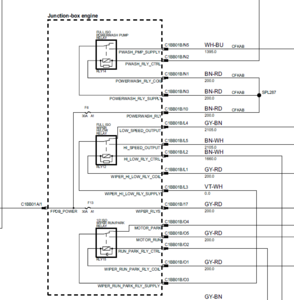Fuse-xfs is a MacFuse (OSXFUSE) driver for XFS filesystems. This driver allows Mac OS 10.7 with OSXFUSE/MacFuse to mount XFS filesystems in read only mode. The journal is ignored, but basic read only operations should work fine. Xfstests with support for the FUSE filesystem gocryptfs added. Working gcc, make, libtool, several headers and dbench.On Fedora, sudo dnf install libtool libuuid-devel xfsprogs-devel libattr-devel libacl-devel libaio-devel dbench gdbm-devel.
A MacFuse (OSXFUSE) driver for XFS
Fuse-xfs is an easy to use MacFuse driver available for XFS file systems. This allows users to mount XFS filesystems in a read-only mode, provided that OSXFUSE/MacFuse is already installed.
Fuse Xfs

NOTE: Fuse-xfs is currently in Alpha phase and comes with no guarantees that the XFS filesystem remains unaltered (although the code does not support writing in any way). Using this is entirely at the user's own risk.
System requirements


Filed under
This enables Disqus, Inc. to process some of your data. Disqus privacy policyFuse-xfs 0.1 Alpha
Fuse For Macos Xfs
add to watchlistsend us an update- runs on:
- Mac OS X 10.7 or later (Intel only)
- file size:
- 659 KB
- filename:
- fuse-xfs-0.1.dmg
- main category:
- Drivers
- developer:
- visit homepage
top alternatives FREE
top alternatives PAID
What is macFUSE?

macFUSE allows you to extend macOS's native file handling capabilities via third-party file systems.
Features
As a user, installing the macFUSE software package will let you use any third-party FUSE file system. Legacy MacFUSE file systems are supported through the optional MacFUSE compatibility layer.
As a developer, you can use the FUSE SDK to write numerous types of new file systems as regular user space programs. The content of these file systems can come from anywhere: from the local disk, from across the network, from memory, or any other combination of sources. Writing a file system using FUSE is orders of magnitude easier and quicker than the traditional approach of writing in-kernel file systems. Since FUSE file systems are regular applications (as opposed to kernel extensions), you have just as much flexibility and choice in programming tools, debuggers, and libraries as you have if you were developing standard macOS applications.
How It Works
In more technical terms, FUSE implements a mechanism that makes it possible to implement a fully functional file system in a user-space program on macOS. It provides multiple APIs, one of which is a superset of the FUSE API (file system in user space) that originated on Linux. Therefore, many existing FUSE file systems become readily usable on macOS.
The macFUSE software consists of a kernel extension and various user space libraries and tools. It comes with C-based and Objective-C-based SDKs. If you prefer another language (say, Python or Java), you should be able to create file systems in those languages after you install the relevant language bindings yourself.
Fuse-xfs 使い方
The filesystems repository contains source code for several exciting and useful file systems for you to browse, compile, and build upon, such as sshfs, procfs, AccessibilityFS, GrabFS, LoopbackFS, SpotlightFS, and YouTubeFS.